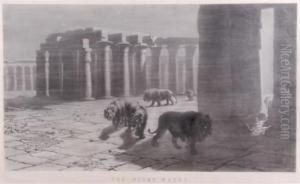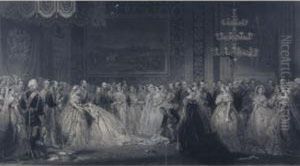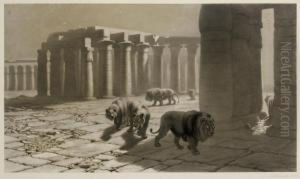Frederick Stacpoole Paintings
Frederick Stacpoole was an English artist known for his work as an engraver. Born in 1813, Stacpoole's life spanned nearly the entire 19th century, a period rich with developments in art and technology, which also saw the rise of print media and the increasing popularity of engravings.
Stacpoole's career was primarily focused on engraving, a form of printmaking where images are incised into a flat surface, usually metal, to produce prints. This medium was particularly important during the 19th century for reproducing works of art, illustrations for books, and for creating original prints. Engravings were widely used to disseminate images to a growing middle-class audience, who were eager to decorate their homes with affordable artworks and to consume illustrated publications.
Though not as widely known today as some of his contemporaries, Stacpoole was recognized for his craftsmanship and the quality of his engravings during his lifetime. He often worked on reproductions of paintings by other artists, which was a common practice among engravers, as this allowed the distribution of artworks to a broader audience than the original painting alone could reach.
In terms of style, Stacpoole’s engravings were marked by fine detail and a keen eye for the nuances of light and shadow, which is particularly challenging in the black-and-white medium of engraving. His work reflects the Victorian taste for sentimentality, historical scenes, and the picturesque, aligning with the popular aesthetics of his time.
Frederick Stacpoole passed away in 1907, leaving behind a legacy of craftsmanship that contributed to the era's visual culture. His engravings remain as historical documents of the period's artistic preferences and as examples of the engraver's skill. The latter part of the 19th century saw the decline of traditional engraving due to the rise of photographic processes, but the contributions of engravers like Stacpoole laid important groundwork for the visual arts and helped shape the visual literacy of the era.


